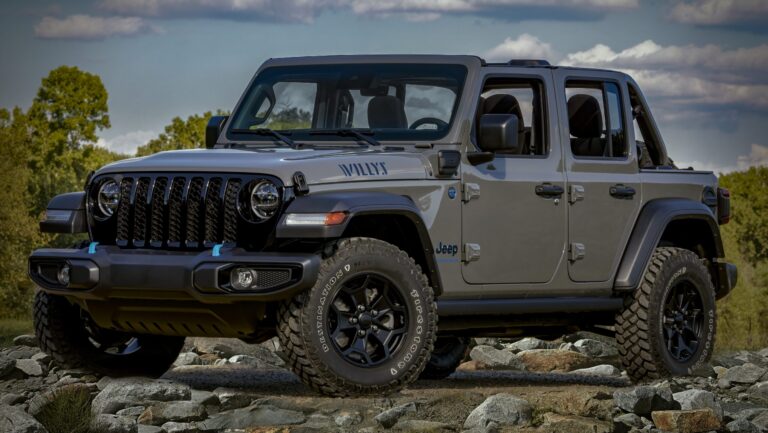2000 Jeep Cherokee Sport For Sale: A Comprehensive Buyer’s Guide
2000 Jeep Cherokee Sport For Sale: A Comprehensive Buyer’s Guide jeeps.truckstrend.com
The year 2000 marked the penultimate production year for one of the most beloved and iconic SUVs ever built: the Jeep Cherokee, specifically the XJ generation. Among its various trims, the "Sport" model stood out, offering a perfect blend of rugged capability, essential features, and the quintessential Jeep character. Today, a 2000 Jeep Cherokee Sport for sale isn’t just a used car; it’s an opportunity to own a piece of automotive history, a testament to simplicity, durability, and go-anywhere prowess. This comprehensive guide aims to equip potential buyers and curious enthusiasts with all the information needed to understand, evaluate, and ultimately acquire one of these legendary machines.
Key Information: A Deep Dive into the 2000 Jeep Cherokee Sport
2000 Jeep Cherokee Sport For Sale: A Comprehensive Buyer’s Guide
Before diving into the buying process, it’s crucial to understand what makes the 2000 Jeep Cherokee Sport tick. This model benefits from years of refinement within the XJ platform, making it one of the most desirable iterations.
Engine and Powertrain:
At its heart, the 2000 Cherokee Sport is powered by the legendary 4.0-liter PowerTech inline-six (I6) engine. This motor is renowned for its durability, torque, and surprising longevity, often reaching well over 200,000 miles with proper maintenance. It produces approximately 190 horsepower and 225 lb-ft of torque, providing ample power for both highway cruising and off-road adventures.
Most 2000 Sport models came equipped with the Aisin-Warner AW4 4-speed automatic transmission, a highly robust and reliable unit known for its smooth shifts. While rarer, some manual transmission versions (using the NV3550 5-speed manual) can also be found.
Drivetrain Options:
Jeep offered two primary 4WD systems for the Cherokee Sport:
- Command-Trac (NP231): A part-time 4WD system, meaning it should only be engaged on loose or slippery surfaces. It offers 2HI, 4HI, and 4LO settings. This is ideal for dedicated off-roaders due to its simplicity and strength.
- Selec-Trac (NP242): A more versatile system offering 2HI, 4HI (full-time, suitable for pavement), 4Part-Time, and 4LO. This provides the convenience of full-time AWD for varied conditions while retaining the robust low-range capability.
Rear-wheel drive (2WD) models were also available, offering slightly better fuel economy for those not needing 4WD.

Chassis and Suspension:
The XJ Cherokee utilizes a unibody construction, giving it a lighter weight and tighter feel than traditional body-on-frame SUVs. However, this also makes unibody integrity and rust a critical inspection point. Suspension consists of coil springs and a solid Dana 30 axle upfront, paired with leaf springs and either a Dana 35 or, less commonly, a Dana 44 solid axle in the rear. This simple, robust setup contributes significantly to its off-road prowess and ease of modification.

Dimensions and Practicality:
With its compact footprint, the XJ Cherokee is surprisingly agile and easy to maneuver in urban environments, yet it offers decent interior space for four adults and a respectable cargo area. Fuel economy isn’t its strong suit, typically ranging from 15-18 MPG combined, but it’s generally acceptable for an older, rugged SUV.
Why the 2000 Jeep Cherokee Sport Remains a Hot Commodity
Despite being over two decades old, the 2000 Jeep Cherokee Sport continues to command respect and strong demand in the used vehicle market. Its enduring popularity stems from several key advantages:
- Unrivaled Durability and Reliability: The 4.0L I6 engine is legendary. With basic maintenance, these vehicles are known to run for hundreds of thousands of miles. Their mechanical simplicity means fewer complex electronic systems to fail and easier, more affordable repairs.
- Exceptional Off-Road Capability: The XJ’s short wheelbase, solid axles, minimal overhangs, and robust 4WD systems make it an incredibly capable off-roader right out of the factory. Furthermore, the vast aftermarket support allows for extensive modifications to enhance its trail performance.
- Simplicity and Maintainability: For the DIY enthusiast, the Cherokee Sport is a dream. Its straightforward design makes many common repairs and maintenance tasks accessible, saving owners significant money on labor costs. Parts are plentiful and relatively inexpensive.
- Classic Appeal and Timeless Design: The XJ’s boxy, utilitarian design has become iconic. It’s a classic in its own right, appealing to those who appreciate rugged aesthetics over modern aerodynamic curves. This classic status helps retain its value better than many contemporaries.
- Practical Daily Driver Potential: While not as refined as modern crossovers, the Cherokee Sport is compact enough for city driving, offers a commanding view of the road, and provides adequate space for most daily needs. It’s a vehicle that can commute during the week and tackle trails on the weekend.

Critical Considerations Before You Buy
While the 2000 Jeep Cherokee Sport offers many advantages, it’s an older vehicle, and potential buyers must be aware of common issues to avoid future headaches. Thorough inspection is paramount.
- Rust: The XJ’s Arch Nemesis: Due to its unibody construction and age, rust is the single biggest concern. Pay close attention to the unibody frame rails (especially near the steering box and rear leaf spring mounts), floorboards, rocker panels, rear quarter panels, and door jambs. Extensive rust can compromise structural integrity and make repairs costly or impossible.
- Unibody Integrity: Beyond surface rust, inspect for cracks or deformations in the unibody, particularly around suspension mounting points, the steering box, and crossmembers. These can indicate hard use or past accidents.
- Common Mechanical Issues (Though Often Minor):
- Rear Main Seal Leaks: Very common on the 4.0L engine. While it makes a mess, it’s often not a catastrophic failure and can be fixed.
- Cylinder Head (0331 Casting): Some 2000-2001 4.0L engines with the "0331" cylinder head casting can be prone to cracking between cylinders 3 and 4, especially if overheated. Look for coolant consumption or milky oil. This is a significant repair.
- AW4 Transmission: Generally robust, but check for proper fluid color (red, not brown or black) and smell (not burnt). Test for smooth shifts without slipping or harshness.
- Cooling System: Older XJs often suffer from cooling system neglect. Check for leaks, especially from the radiator, water pump, and hoses. Ensure the electric fan engages.
- Suspension Wear: Bushings, ball joints, tie rod ends, and leaf springs will likely be worn. Sagging rear leaf springs are common.
- Maintenance History is King: Always ask for service records. A well-maintained XJ, even with high mileage, is generally a safer bet than a low-mileage example with no history. Look for evidence of regular oil changes, coolant flushes, and transmission service.
The Buyer’s Inspection Guide: What to Look For
When you find a 2000 Jeep Cherokee Sport for sale, a meticulous inspection is your best friend. Don’t rush it.
-
Exterior and Unibody:
- Rust, Rust, Rust: Get underneath the vehicle. Bring a flashlight. Inspect the frame rails, especially where the steering box mounts (driver’s side front), the transmission crossmember, and all four spring mounts. Check rocker panels, lower door edges, wheel wells, and the tailgate area.
- Accident Damage: Look for inconsistent panel gaps, mismatched paint, or ripples in body panels. Check the core support for signs of repair.
- Tires: Check tread depth and even wear. Uneven wear can indicate alignment issues or worn suspension components.
-
Engine Bay:
- Fluid Leaks: Check for oil leaks (valve cover, rear main seal, oil filter adapter), coolant leaks, and power steering fluid leaks.
- Fluid Condition: Check oil (should be golden/brown, not black or milky), coolant (should be green/orange, not rusty or sludgy), and brake fluid.
- Belts and Hoses: Look for cracks, fraying, or bulging.
- Battery: Check for corrosion and secure terminals.
- Unusual Noises: Start the engine cold. Listen for ticking (common on 4.0L but shouldn’t be excessive), knocking, or squealing.
-
Drivetrain:
- Transmission: On the test drive, note how it shifts. Should be smooth, without clunking or slipping. Check the fluid level and color.
- Transfer Case: Engage 4HI and 4LO (only on a loose surface like dirt or gravel). It should engage without excessive grinding or difficulty.
- Axles: Check differential covers for leaks. Look for play in the U-joints on the driveshafts.
-
Suspension and Steering:
- Bushings: Look for cracked or worn rubber bushings on control arms, sway bar links, and leaf spring shackles.
- Shocks: Check for leaks or excessive bounce.
- Steering Play: With the vehicle off, turn the steering wheel side to side. Excessive play (more than an inch or two) indicates worn steering components (tie rods, ball joints, steering box).
- Sagging: Check if the rear end sags significantly, indicating worn leaf springs.
-
Interior:
- Seats and Headliner: Check for rips, stains, or sagging headliner.
- Electronics: Test all windows, door locks, mirrors, AC/heater (ensure AC blows cold), radio, and all dashboard lights.
- Odor: Musty smells can indicate water leaks or mold.
-
Test Drive:
- Listen: Pay attention to any unusual noises (clunks, squeaks, grinding, whining).
- Feel: Note vibrations, pulling to one side, or excessive steering play.
- Brakes: Ensure they are firm and stop the vehicle smoothly without pulling or pulsing.
- Acceleration: Check for smooth power delivery.
- 4WD Engagement: If possible, test 4WD on a safe, loose surface.
Tips for a Successful Purchase or Sale
Whether you’re buying or selling a 2000 Jeep Cherokee Sport, a few key strategies can ensure a smooth transaction.
For Buyers:
- Research Market Value: Use online resources like Kelley Blue Book (KBB.com), Edmunds, or local classifieds (Craigslist, Facebook Marketplace) to understand the current market value based on condition, mileage, and location. Be realistic; excellent condition XJs command higher prices.
- Pre-Purchase Inspection (PPI): This is the single most important step. Have an independent mechanic, ideally one familiar with older Jeeps, thoroughly inspect the vehicle. This small investment can save you thousands in unexpected repairs.
- Be Patient: Don’t jump at the first Cherokee you see. There are many out there. The right one, with good maintenance and minimal rust, will eventually surface.
- Negotiate Wisely: Always negotiate the price. Use any identified issues from your inspection as leverage.
- Check Documentation: Verify the title is clean and matches the VIN. Inquire about service records.
For Sellers:
- Detail and Minor Repairs: A clean vehicle presents better. Address minor issues (e.g., burned-out bulbs, missing trim pieces) before listing.
- Gather Documentation: Have all service records, the title, and any relevant paperwork organized and ready to show.
- Honest Disclosure: Be transparent about any known issues. This builds trust and can prevent disputes later.
- Price Competitively: Research similar models in your area and price your Cherokee fairly based on its condition, mileage, and features. High-quality photos are crucial for online listings.
Navigating Challenges and Finding Solutions
Even with a thorough inspection, owning an older vehicle like a 2000 Jeep Cherokee Sport can present challenges. Fortunately, solutions are often readily available.
- Parts Availability: This is rarely an issue. Due to the XJ’s massive popularity and production run, parts (both OEM and aftermarket) are abundant and relatively inexpensive. Online retailers, local auto parts stores, and specialized Jeep shops all stock a wide array of components.
- Finding Knowledgeable Mechanics: While many general mechanics can work on an XJ, seeking out shops specializing in Jeeps, older SUVs, or off-road vehicles can be beneficial. Online Jeep forums and local clubs are excellent resources for recommendations.
- Addressing Rust: Depending on the severity, rust can be a major undertaking. Surface rust can be treated with rust converters and paint. However, structural rust (in the unibody frame rails) often requires professional welding and fabrication, which can be costly. Factor this into your budget if considering a rusty example.
- Common Fixes are Well-Documented: The XJ community is vast and incredibly supportive. Almost every common issue has been thoroughly documented online with DIY guides, videos, and forum discussions. This makes tackling repairs yourself much easier.
Pricing Guide for a 2000 Jeep Cherokee Sport
The price of a 2000 Jeep Cherokee Sport can vary significantly based on its condition, mileage, geographical location, and whether it has desirable features or modifications. The table below provides a general estimated price range in USD.
| Condition | Mileage Range (Approx.) | Estimated Price Range (USD) | Key Factors and Description |
|---|---|---|---|
| Poor | 180,000+ | $1,500 – $3,000 | Significant rust on unibody/body, major mechanical issues (engine/transmission needing rebuild or replacement), heavily worn interior, non-functional AC/heater. Primarily a project vehicle or parts donor. |
| Fair | 150,000 – 180,000 | $3,000 – $5,500 | Moderate rust (some surface, minor perforation possible), some mechanical issues (leaks, worn suspension components), average interior wear. Drivable but requires investment in repairs and maintenance to be reliable. |
| Good | 100,000 – 150,000 | $5,500 – $8,000 | Minimal to no significant rust, well-maintained mechanically (all systems functional), clean interior with minor wear, good tires. Ready to drive with routine maintenance. |
| Excellent | Under 100,000 | $8,000 – $12,000+ | Little to no rust, pristine mechanical condition, immaculate interior, all original features working, low mileage for its age. These are rare finds and often command premium prices, especially if completely stock. |
| Collector/Modified | Varies (often lower) | $10,000 – $20,000+ | Exceptionally clean, very low mileage examples, or professionally built/restored vehicles with high-quality off-road modifications (lifts, armor, drivetrain upgrades). Value depends heavily on quality of work and components. |
Disclaimer: These are approximate values. Actual prices will depend on the specific vehicle, seller, and market dynamics at the time of sale. Always conduct a thorough inspection or get a PPI.
Frequently Asked Questions (FAQ)
Q: Is the 4.0L engine truly as reliable as people say?
A: Yes, the 4.0L PowerTech I6 engine is legendary for its reliability and longevity. With consistent oil changes and cooling system maintenance, it’s common to see these engines run for 200,000 to 300,000 miles or more.
Q: What’s the difference between Command-Trac (NP231) and Selec-Trac (NP242)?
A: Command-Trac (NP231) is a part-time 4WD system, meaning it should only be used on loose or slippery surfaces (like dirt, snow, or mud) to prevent drivetrain binding. Selec-Trac (NP242) offers full-time 4WD, which can be used on pavement, in addition to part-time 4WD for more severe off-road conditions.
Q: How bad is the rust issue on XJs?
A: Rust can be a significant issue, particularly in regions where road salt is used. Common areas include the unibody frame rails, floor pans, rocker panels, and rear quarter panels. A thorough inspection for rust is absolutely critical before purchase.
Q: Are parts expensive or hard to find for a 2000 Cherokee Sport?
A: No, quite the opposite. Due to the XJ’s enduring popularity and large production numbers, parts are generally affordable and widely available through both OEM and extensive aftermarket channels.
Q: Can a 2000 Jeep Cherokee Sport be a good daily driver?
A: Absolutely. Many owners use them as daily drivers. They are compact, offer good visibility, and are relatively easy to maneuver. While they won’t offer the creature comforts or fuel efficiency of a modern crossover, they are practical and dependable for everyday use.
Q: What’s the average fuel economy I can expect?
A: You can generally expect around 15-18 MPG combined, depending on the drivetrain (2WD vs. 4WD), transmission, driving style, and any modifications (like larger tires or lift kits) that might affect efficiency.
Conclusion
The 2000 Jeep Cherokee Sport stands as a testament to practical, no-nonsense engineering. Its rugged design, legendary 4.0L engine, and impressive off-road capabilities have cemented its place as a true automotive icon. While buying a two-decade-old vehicle requires careful consideration, especially regarding potential rust and maintenance history, the rewards of owning an XJ are immense.
For those seeking a reliable, versatile, and highly modifiable SUV with a strong community following, a 2000 Jeep Cherokee Sport for sale represents an exceptional value. It’s more than just a mode of transport; it’s an invitation to adventure, a piece of automotive heritage, and for many, a lifestyle choice that continues to inspire and excite. With the right knowledge and a thorough inspection, you can confidently find and enjoy your very own piece of Jeep legend.




